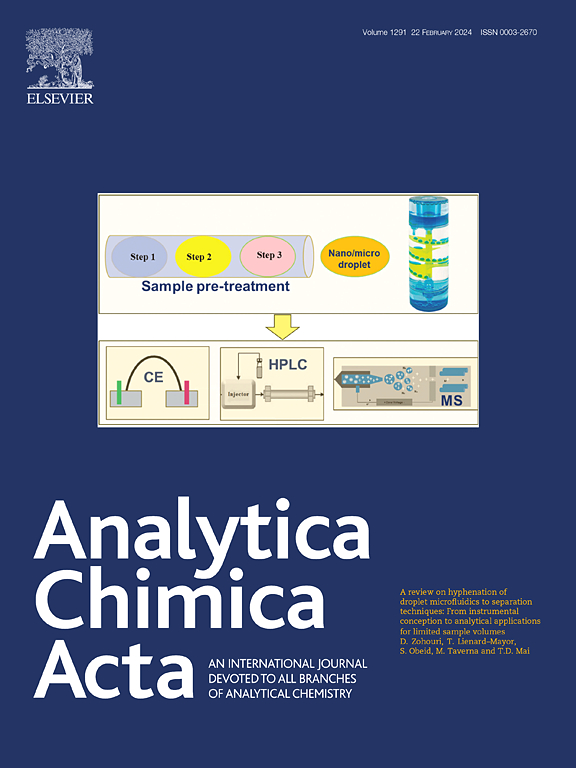电化学传感器多变量校准模型在高精度镉离子长期监测中的应用
IF 5.7
2区 化学
Q1 CHEMISTRY, ANALYTICAL
引用次数: 0
摘要
本文章由计算机程序翻译,如有差异,请以英文原文为准。


Application of multi-variable calibration model of electrochemical sensor in high-accuracy long-term monitoring of cadmium ions
Background
As the issue of heavy metal pollution has become increasingly prominent, the electrochemical detection of trace heavy metal ions in the marine environment has emerged as a significant and commonly utilized method. The detection of heavy metal ions has been a gradual replacement of traditional methods with electrochemical detection. However, the temperature and pH of seawater vary with time and location, leading to biases in the detection results of conventional ion-selective membrane sensors that only focus on the relationship between concentration and voltage.
Results
This paper treats an experimental and modeling study to predict the electrochemical performance of ion-selective membrane sensors under varying temperatures and pH. By investigating the relationship between the working electrode response potential, pH, temperature, and cadmium ion concentration, a multivariate self-calibration model including pH, T, and the logarithm of cadmium ion concentration as independent variables was constructed. The determination coefficient R2 of the model was 0.9997, indicating a good fit. Automatic correction of electrochemical sensor minimizes the impact of temperature and pH, ensuring accurate readings of cadmium ion concentration during long-term monitoring. In addition, the recovery rates of Cd(II) concentration measurements were 113 % (coexisting with Na(I)) and 121 % (coexisting with Cu(II)), indicating good resistance to interference. Accuracy tests showed recovery rates ranging from 98 % to 121 %, demonstrating the good accuracy.
Significance
Therefore, the ion-selective membrane sensors can reduce the interference of temperature and pH on the measurement of heavy metal ion concentrations through the multivariate self-calibration model. This study provides a reliable detection method for addressing the issue of heavy metal pollution in water bodies and has a broad application prospect.
求助全文
通过发布文献求助,成功后即可免费获取论文全文。
去求助
来源期刊

Analytica Chimica Acta
化学-分析化学
CiteScore
10.40
自引率
6.50%
发文量
1081
审稿时长
38 days
期刊介绍:
Analytica Chimica Acta has an open access mirror journal Analytica Chimica Acta: X, sharing the same aims and scope, editorial team, submission system and rigorous peer review.
Analytica Chimica Acta provides a forum for the rapid publication of original research, and critical, comprehensive reviews dealing with all aspects of fundamental and applied modern analytical chemistry. The journal welcomes the submission of research papers which report studies concerning the development of new and significant analytical methodologies. In determining the suitability of submitted articles for publication, particular scrutiny will be placed on the degree of novelty and impact of the research and the extent to which it adds to the existing body of knowledge in analytical chemistry.
 求助内容:
求助内容: 应助结果提醒方式:
应助结果提醒方式:


